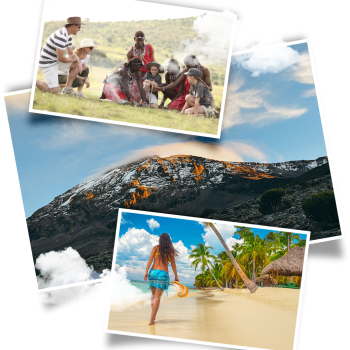Ngorongoro Crater is a massive volcanic caldera located in northern Tanzania, within the Ngorongoro Conservation Area, a UNESCO World Heritage Site. This magnificent natural wonder is the world’s largest inactive, intact and unfilled volcanic caldera, measuring approximately 19.2 km (12 miles) in diameter. The crater’s walls rise up to 610 meters (2,000 feet) above the crater floor, providing breathtaking views of the surrounding landscape.
Ngorongoro Crater is known for its incredible wildlife and is home to approximately 25,000 large animals, making it one of the most densely populated wildlife areas in Africa. The crater’s diverse ecosystems support a variety of wildlife, including lions, elephants, cheetahs, zebras, and wildebeests. In particular, the crater is famous for its large lion population, estimated to number around 70 individuals.
Managed by the Ngorongoro Conservation Area Authority (NCAA), the Ngorongoro Conservation Area aims to balance conservation with sustainable tourism and the needs of the local Maasai community. Visitors can explore the crater’s rich cultural heritage and learn about the traditional way of life of the Maasai people who have lived in and around the conservation area for centuries.
Tourists can access the crater floor by road and enjoy guided game drives to explore the diverse wildlife of the region. The crater attracts approximately 500,000 visitors per year, making it one of the most popular tourist destinations in Tanzania.
In summary, Ngorongoro Crater is an extraordinary natural wonder and a key landmark in Tanzania. Its unique geological and ecological features, along with its rich cultural heritage, make it an ideal destination for travelers seeking an unforgettable experience in Africa.
The best time to visit Ngorongoro Crater depends on personal preferences. The long rainy season is from March to May, and the short rainy season from October to December, making wildlife sightings challenging but the scenery lush. The dry season, from June to September, offers the best wildlife viewing opportunities, with clear skies and dry roads. January and February are also good months for wildlife viewing but are peak tourist season.
The most experienced and customer-focused guides & staff in the industry
We believe in personal Experience, For each traveler we customize the trip to his/her exclusive needs

Our commitment to the environment & local communities is unmatched
We have careful selected the Hotels, Lodges and Camps we use, We believe in a good rest during an adventure
©2024. Ziara to Africa. All Rights Reserved.